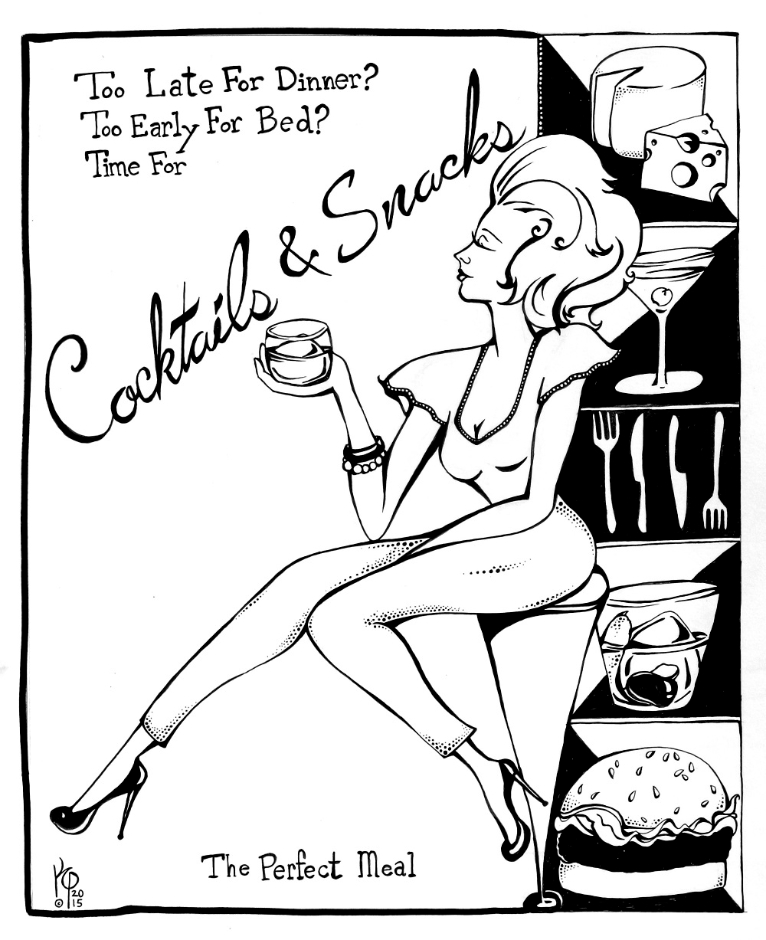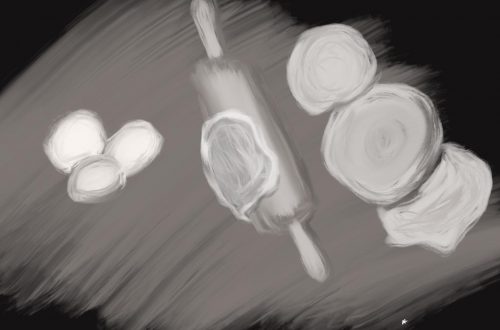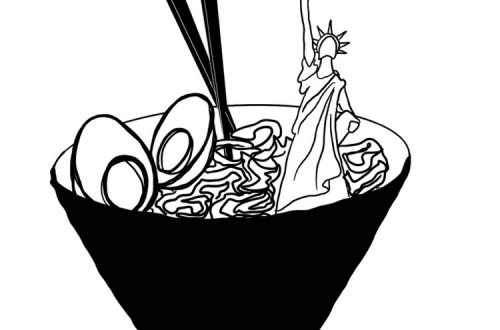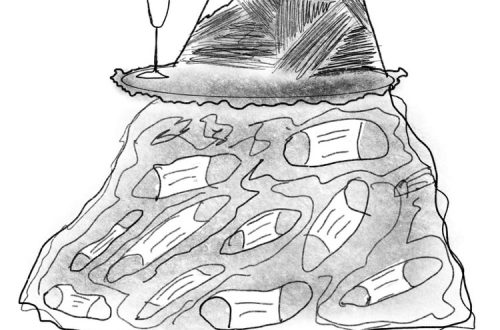by Catherine Campbell
When I wrote about the five saddest sandwiches in the world a couple of weeks ago, it was supposed to be a filler piece (hahahaha PUNS, but anyway). A few hundred words of entertainment. That was it. Done and done.
But right after publication, Jon (our editor) forwarded an email to me accompanied by the question, “What do you think?”
It was a note from one of Asheville’s highly respected butchers: Casey McKissick, owner and operator of Foothills Meats. In his email, he expressed concern for my assumptions of bologna and was cordially inviting me and the rest of the Dirty Spoon crew to join him at the Foothills commissary kitchen in Black Mountain to learn how bologna was made, and to experience how truly great it could taste.
A free lunch and a lesson on deli meat? First of all, I never turn down an invitation to food. And as a sheltered Appalachian kid with very little kitchen experience (my sole stint as a pie thrower for an Asheville pizzeria was definitely not applicable in this scenario), I was fascinated by the idea of peeking behind the curtain and getting a glimpse into the world of meat processing. Without hesitation I said yes, and Jon arranged the time.
The following Friday, I drove down Highway 70, carefully scanning the road side buildings for an iconic MEAT sign–the only symbol for Foothills’ flagship location. It was almost 12:30pm. I had never been to Foothills’ Black Mountain location, and for a revered butcher shop whose sandwiches I had savored at Ben’s Penny Mart, I expected more…I don’t know…fanfare? Fancy lights and carefully arranged hipster accoutrement? At least a branded store front.
No. The Foothills commissary kitchen in Black Mountain is truly a humble space and best-kept secret. They don’t sell directly out of this location, but they do offer it as one of their Meat CSA pick-up spots. This is where the magic happens. When you step inside, you get the feeling like you’re stepping into someone’s private workshop…it’s not fancy, but there’s a personality to it. The atmosphere is permeated by a love, focus, and commitment to the craft and value of “honest meat.”
Jon and Katrin were already there, and standing next to Katrin in the kitchen’s main room was Casey McKissick. We shook hands and–having never met the man–I immediately noted his warm demeanor. This, I would discover over the course of the day, is one of Casey’s gifts: not only is he a remarkable butcher and businessman, he also possesses an innate consideration and compassion that, coupled with his sense of humor, makes him well-loved in the industry. I also had the pleasure of meeting the inimitable Jimmy Lee, Casey’s right hand man and also a chef extraordinaire about town, primarily of El Kimchi fame.
There was a monstrous hog sliced lengthwise on the table next to us but MORE IMPORTANTLY sitting right beside it was (cue heavenly angels singing) a cutting board laden with triangles of delicious bologna sandwiches: ‘baloney’ freshly fried up and served between slices of toasted bread with a dollop of mayo. I was starving–read: super fucking “hangry”–so as soon as Katrin picked up hers, I reached for one. Classic rock played from an unseen radio as I savored the warm sandwich.
Casey brought us three red cafeteria-style glasses of water but I never got to mine. Polishing off the sandwich in a couple of bites, I turned my attention back to the half hog chilling on the table. I was ready to dive in.
First of all, I should explain something: pigs are alien to me. They’re cute, dirty, low riders who somehow end up on my plate and that’s all I know. I’ve never spent a moment in my life hanging out with a pig. I’ve watched Babe and Charlotte’s Web.
I was born on a homestead in Clay County where we had horses, ponies, goats, chickens, ducks, you name it…but no pigs. And I learned how to hunt and preserve game meat, but I’ve never spent any time raising, slaughtering, preparing or preserving pork. This factors into my assumptions about bologna: if I don’t understand the animal that goes into the mystery deli meat, I sure as hell am not giving it a chance. Hence SAD SANDWICH.
Foothills sources their Berkshire pigs from Wild Turkey Farms in China Grove, North Carolina. [Yeah, I had to use Google Maps for that one, you’re not alone.] The farm has been impressively maintained by the Menius family for over a century, and their animals are pasture-raised and well loved. They’ve cultivated a great relationship with Foothills, Casey explained, and it’s a sign of respect to both the farmer and the pig to use the entire animal. It makes sense in every way you can think of, especially financially, but surprisingly many butchers and plenty of consumers only want to sell/buy a few specific cuts of meat. This leads to a shocking amount of wasted food.
Casey and Jimmy needed to prep this half pig for their meat share, so Jon, Katrin and I watched, mesmerized, as Jimmy sawed and separated the animal’s parts with precision, while he and Casey explained the different cuts and what the cuts are used for. Having handled my own share of raw meat and game in my lifetime, I instinctively reached out and held the pig in place while Jimmy sawed through it. Fortunately, they supported my enthusiasm.
The meat was beautifully marbled, and Casey separated and plopped a giant raw roast into my hands. I almost trembled under the weight of it and vowed to start working out more if I was gonna get into #butcherlife properly one day. This wasn’t anything like what I had dealt with before in terms of prepping small game, chickens or venison. The adage “whole different animal” becomes highly appropriate when you’re gazing into the internal details of a pig. A new world opens up in front of you: the bits that will determine optimal taste and flavor, the line of muscle, the stark white bone, the hidden treasure of fat destined to become lard.
Even before we got to the emulsification and casing, this entire experience was hitting me hard in the heart. Pardon the expression, but I was having all the feels.
When you grow up poor in Appalachia like I did, food equals survival. You grow it, you hunt for it, you trade something to attain it, and sometimes you simply go without. My mom was a single mother who worked a ton of hours as a nurse so we had a lot of the same cheap meals night after night: tomato soup and grilled cheese (nostalgia hence NOT A SAD SANDWICH), tacos, spaghetti. Side note: I never ate bologna growing up. Plates were licked clean. For my sister and me, food appreciation was a different concept than the foodie trends we have in the Asheville culinary scene.
Today: I’ve been lucky enough to taste everything from backyard skillet corn cakes to the finest delicacies on other continents. I still forage and source as much as possible–call it a lifetime habit. My son is now growing his interest in where our food comes from, largely thanks to survival mode in Minecraft.
So I watched with deep appreciation and delight as this pig, a symbol of another winter survived, was explained and utilized, piece by piece. From using bones for broth and pet chew toys, to harvesting and supplying the pig’s feet to select buyers, to creating fine lard from the Berkshire’s fat, Casey and Jimmy didn’t waste an ounce. (Except for the glands, which may only be kept in very, VERY special cases.) The poor, always-hungry Appalachian girl in me rejoiced as I heard about the parts that would be smoked, the parts that would be brined and cured, the parts that would be sold raw for cooking…and by the end of it, we were left with a mountain of delicious pork trim, while I was craving another sandwich.
And trust me, it was a small mountain of meat. Trim is simply the not-so-pretty parts of the pig but are still incredibly tasty, nutritious, and usable.
As Jon wrote on his Instagram feed, “For a butcher dealing in whole hog, who buys their animal by the pound, you would virtually be throwing away half a pig. Note: there are no guts, butts or brains in that pile. It’s perfectly good meat that was trimmed off of the store variety cuts to make them look pretty.”
The entire pig–now separated and placed carefully into clean lined bins by Casey–was wheeled into the walk-in where it would be assessed for the next CSA boxes. We turned our attention back to the trim.
“This is what we use to make bologna,” Casey explained. For a moment I simply stared at it. It was certainly different from the ‘lips and assholes’ rumor…perhaps applicable to a factory-farming operation like Oscar Meyer, but definitely not here. Just clean, pasture-raised pork. To save us some time, Casey and Jimmy pulled from the walk-in a giant silver bowl of already prepped and chopped pork and beef trim (the beef sourced from Brasstown Beef, right around the corner from my birthplace), and a tray of spices. The trim Jimmy had just piled up in front of us would be used in their next batch of bologna.
Jimmy added generous amounts of pepper, salt, spices and topped it off with a helping of milk powder (which would be used to bind the meat and water in the grind and emulsifier process).
The four of us followed Jimmy into the walk-in, closing the door behind us. In the middle of the walk-in was a large, solid grinder. “Typically, these cost $15,000 brand new,” Casey said. From start to finish, this was not a cheap process and nothing would be spared in terms of time, energy, and equipment.
Casey passed the spiced trim through the grinder four times, with Jimmy holding the bowl at the opening to catch the meat and handle it for consistency. At one point they set a smaller die and began again. A fifteen-percent ratio of water was added which emulsified the meat until it was a paler color and mushy, with white flecks in it. I wanted to reach out and squeeze it between my fingers, but this time I held back respectively and watched. We huddled together. Jimmy finally determined it was perfect. It came out thick and pasty, and even though I was shivering in the refrigerated cold, I knew we were nearing the end of this amazing process, where it would become the thinly-sliced circular deli meat with which we’re all familiar.
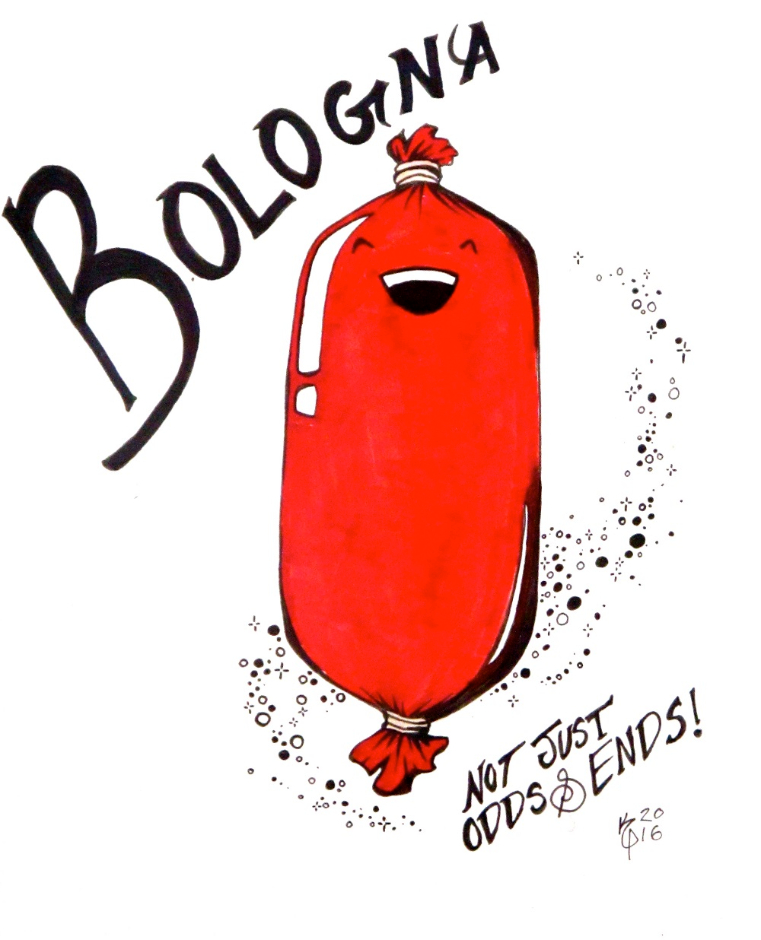
For a short photo essay on our Foothills experience, check out Jonathan Ammons’s Instagram feed.
For more information on Foothills Meats and to keep up with their new adventures, visit their website.


